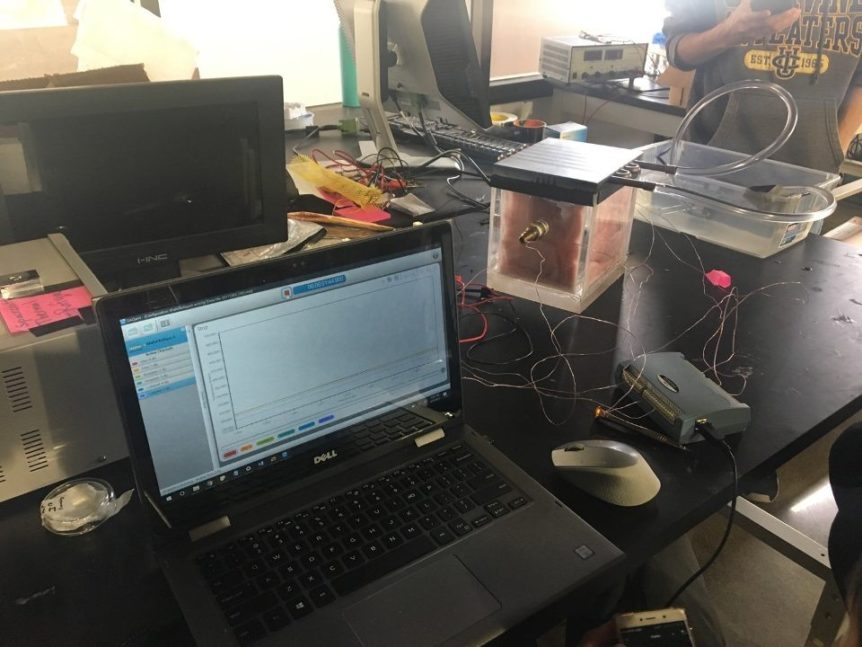Howdy Again!
It’s finals week and we’re still pushing strong. We got our results back from testing, and there’s good news and bad news (but a silver lining).
The Bad News: The testing team ran a color change test on two WO slides and did not see a change in color when a voltage ran across it. Disappointing results indeed, but there’s a silver lining. A corner of the square, under further inspection, actually did produce a change in color. When polarity is flipped, the change in color disappeared. when polarity is reflipped again, the blue in the corner reappeared! We hope that the team will come back more motivated from these results after winter break.
The good news: The NiO team ran a final experiment for the quarter, which involved cleaning and plating four glass microscope slides with NiO using a Color Bath Disposition (CBD) solution with half concentration and with time intervals of 10 minutes. Throughout the annealing process the slides undergo a visible color transition, where the film turns from the dark film to a frosty white film, once the temperature of the slide surpasses a certain temperature. Furthermore, from observations with the naked eye, film darkness was progressively darker with increasing residence time in CBD. From previous experiments, it is suspected for film thickness to be correlated to film emissivity and light transmission, proving that to be somewhat true and it is also suspected for film thickness to be correlated to film emissivity and light transmission.
The team is hoping that after winter break, work will involve the development of theoretical mathematical models to describe the relationships between film thickness, light transmission, emissivity and CBD residence time. They hope to have access to film analysis instruments and equipment and connections with the appropriate lab managers will be initiated and set up before the next quarter.
The testing team ran a test on a slide using the setup as shown above for an hour. The graph produced for this is similar to last year’s graph, noting that they are on the right track. However, the equation to find the emissivity, when calculated, was too low (0.004 compared to 0.4). The team hopes that during winter break, an equation that can correctly attain the emissivity can be attained and subsequent test runs will produce good results.
Anyways, that’s all the time we have for now! Good luck with finals week and we hope to see you again next year.
Happy Holidays!
The Spacecraft Thermal Management Team

